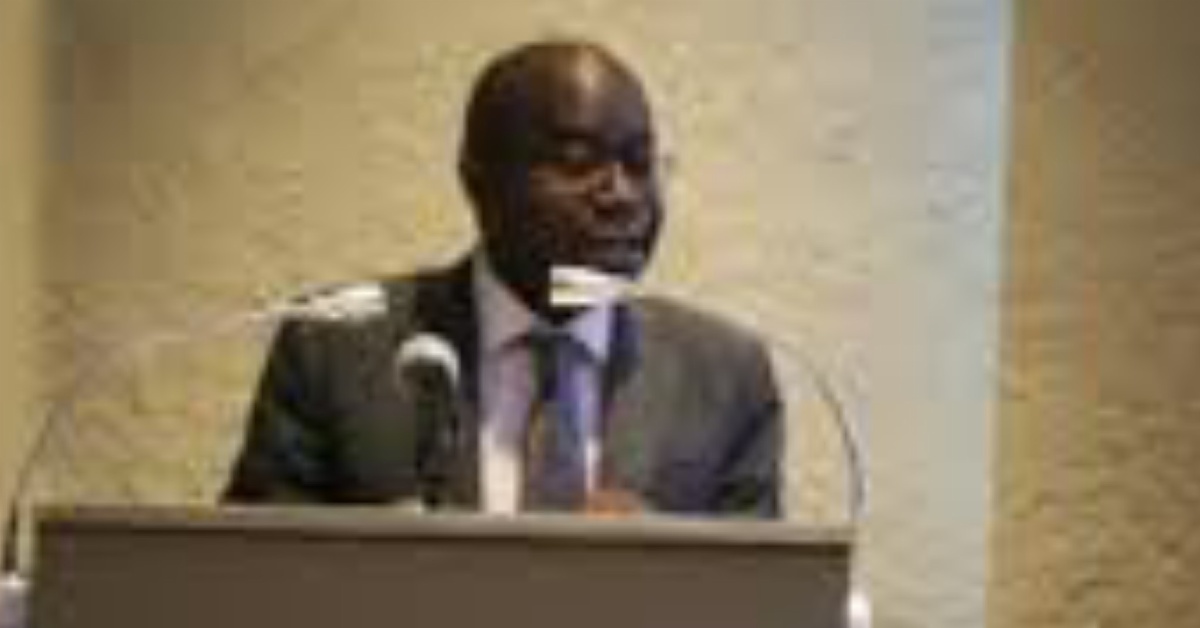Financial secretary Sahr L. Jusu has joined others from across the globe at the World Bank launching of $93.0 Billion on Partnering for Effective Development Cooperation in Tomes of Overlapping Crises.
Addressing others during the launching, Sahr L. Jusu starts by thanking the government of japan for their warm welcome.
“Let me join previous speakers to thank the Government of Japan for the hospitality accorded us since our arrival in Tokyo and for hosting the IDA20 Launch Event. I would also like to commend the IDA Team for the exceptional work done to frontload IDA19 to address the emergencies created by the COVID 19 Pandemic and also the catalytic role played in advocating donors to mobilize up to US$93.0 billion for IDA20; which we are here this week, on the behest of the Japanese Government, to launch its implementation”.
“As stated by Aki yesterday, IDA itself is like a bridge; but the Bridge cannot bring nations and their citizens together without our donor’s intervention. I thank you, our Donors, for your continuing support to IDA recipient countries and your commitments to IDA20 replenishment of the historic funding of $93.0 billion”.
“As Borrowers and IDA recipients, we are at the forefront of aid management and I, therefore, agree that the global aid architecture is getting complex and still changing rapidly. From yesterday’s panels that discussed issues relating to climate-resilient futrdebt vulnerabilities and transparency, pandemic preparedness and health systems strengthening, migrants and refugees, certain key common elements came through the panelists; these include multiple crises that are adversely affecting IDA, the re-emergence of increased aid proliferation and fragmentation as well as the need to enhanced coordination at national, regional and multilateral levels to deliver results”.
“Sierra Leone has gone through overlapping crises over the last two decades. The Country has had one of the highest numbers of shocks ranging from what we referred to as the twin shocks to the economy-the collapse of the iron prices in 2014 and also in the same year (2014), the outbreak of the Ebola Virus Disease in the sub-region that killed nearly 4,000 people in Sierra Leone, mudslides in August 2017 with over 1,000 deaths, the COVID 19 pandemic and the Crisis in Ukraine as well as the most recent floods and mudslides (two weeks ago) in the Capital, Freetown resulting into the loss of lives and properties”.
“Therefore, as a country, during periods of crisis and normal program implementation, we have experienced increased proliferation and fragmentation of external assistance inflows that require effective partnership and coordination among donors and with the Government”.
“Ironically, the challenges we face today in terms of aid proliferation, fragmentation, ion, and coordination of external support are very similar to the ones faced in the late 1990s, which led to the Paris Declaration on Aid Effectiveness in 2005. The 2008 Accra Agenda for Action(AAA) was meant to accelerate the implementation of the Paris Declaration”.
“In line with the global trend, Sierra Leone, like most of the IDA countries, has experienced increased external official financial flows and fragmentation over the last two decades. In Sierra Leone, official records estimate that development partners that provide direct or indirect external financial flows have more than doubled from less than 20 in 2000 to over 40 donors by 2021. Similarly, external assistance disbursement which was around US$180.6 million in 2000 reached an estimated US$917.69 million in 2021. While le a significant proportion of the multilateral official financial flows, particularly concessional loans, are channeled through the Government budget, the bulk of the bilateral resources are implemented by donor partner agencies and NGOs with a high level of fragmentation. For the same period, we have seen significant growth in NGOs operating in Sierra Leone either within a sector or across sectors from around 100 to over 400 from 2000 to 2021. About 503 projects or activities were implemented in 2019-2021, by mainly donor partner agencies, including NGOs and civil society groups. The UN family alone accounted for about 160 projects with $36.94 million disbursement (meaning average disbursement per project was roughly US$230,000)”.
“We have also observed ed a high concentration of activities in certain sectors; 52 project activities were funded in the health sector by 13 donors; 37 activities in the Agricultural sector with 12 donor partners (with recorded 53 NGOs); 25 in the education sector, 25 and 23 project activities in areas which are referred to as Government capacity building, and Transparency and Democracy respectively”.
“The above demonstration the of IDA recipient experience supports the Bank’s call for Action to address the issue of Partnering for Effective Development Cooperation in times of overlapping crises.
No doubt there has been progress made in many countries, but we see the issues re-emerging and therefore I think as a first step, we should look at what was working and why it is no longer working. Then we could look at what never worked and see how we can ensure its implementation.
However, in Sierra Leone, we have experienced that alignment sometimes can be very broad. For instance, Health can be in our National Development Plan but Government priority can be focusing on the health strengthening system of its human capital development. But donor “A” can insist on supporting an increase in family planning, which channels aid resources to agencies to implement. This clearly will not assist Government to achieve its top priority within the sector as articulated in its National Development Plan. Therefore, for effective development assistance, alignment should be activity based, as prioritized by the Government in its national development plan.
We should not be seen competing in the development space, but in partnership, we should converge to deliver the much-needed development outcomes to reduce poverty. We have a classical example in Sierra Leone during the COVID-19 pandemic, learning from the Ebola Virus Disease period. The Government, in collaboration with the development partners, developed two strategic documents even before the first index COVID 19 case was confirmed:
the Quick Action Economic Response Programme (QAERP):-The overall objective of the QAERP was to maintain macroeconomic and financial stability, as well as mitigate the impact of the disease on households and businesses.
A comprehensive COVID-19 Health Sector Response Plan. The priorities articulated in both plans necessitated the preparation of the 2020 Supplementary Budget to effect the needed budgetary reallocations”.
“Official development partners particularly multilateral and bilateral financial institutions aligned their response to these plans, disbursed resources through the Budget, met regularly to review financing, implementation,ion, and re-prioritized activities as the response unfolded as well as agreed and implemented a mutual accountability framework in the use of the resources”.
“We have also over the years formulated the National Medium Term Development Plan with the collaboration of development partners and agencies, civil sociegroups,oup, and private sector participation. Several sector strategic plans and round tables are formulated geared toward enhancing coordination n, minimizing fragmentation in the implementation of programs and projects”.
“In Sierra Leone, we have a saying that states “if you pour honey on honey it does not make it sweeter. You will just have more honey”. To utilize more honey you might need more cups or bottles-that getting more honey sometimes increase your transaction cost. What that means is that we need partners at the national level to collaborate properly to be providing support through gh the budget, basket fu,nds, and/or sector-wide approaches where several partners contribute to achieving a priority but implementation is coordinated and centralized. By scaling up this, both the partners and Government would have mutual accountability in managing for results in the utilization of aid resources otherwise, despite increased aid flow, the much-desired result of aid effectiveness will be difficult to achieve.
I would like to conclude by saying that for the First Timin e, Africa the highest level of Heads of State and Governments met twice (one in Cote D’Ivoire and another in Senegal) where they made their voice heard about the areas they plan to utilize IDA 20 resources. At the Dakar Summit, they made it clear in the Communique, that the development efforts of the Bank to reduce poverty are threatened by high debt overhang and climate change during the period of overlapping crises. They, therefore, call on the Bank to partner with other donors:
to improve the concessional and disbursement terms of IDA20 resources to enable member countries to limit the risks of public debt distress and reiterate their commitment to improve debt transparency and management; and remind the international community of the critical and urgent need to take immediate action to address climate change in IDA countries by intensifying the efforts to revitalize ecosystems, promoting landscape restoration and sustainable forest management as well as green resilience economy”.
“To deepen the Call by African Heads of States and Governments on debt issues, I would encourage the World Bank, to create a special Ministerial Forum for Finance Ministers to exchange views, monitor progress on debt transparency and debt management and assess the impact on debt over on economic management, more so when nearly 60 percent of the 74 IDA countries are either in debt distress or at high risk of debt distress which the is the threatening achievement of desired of outcomes under IDA 20”.



 Post a comment
Post a comment 









